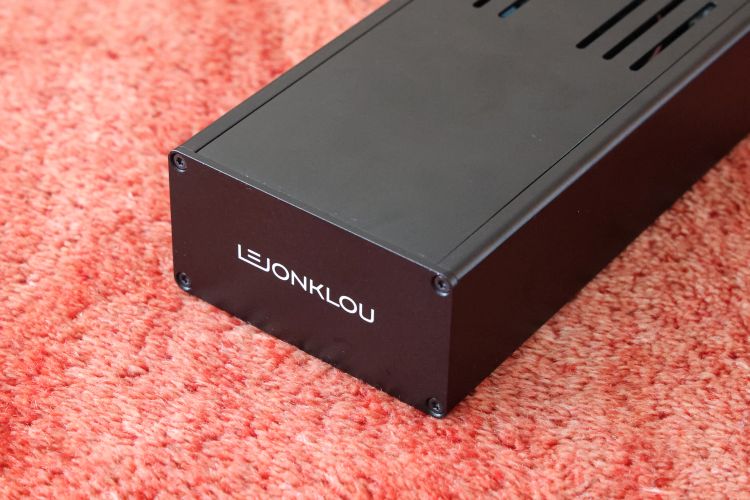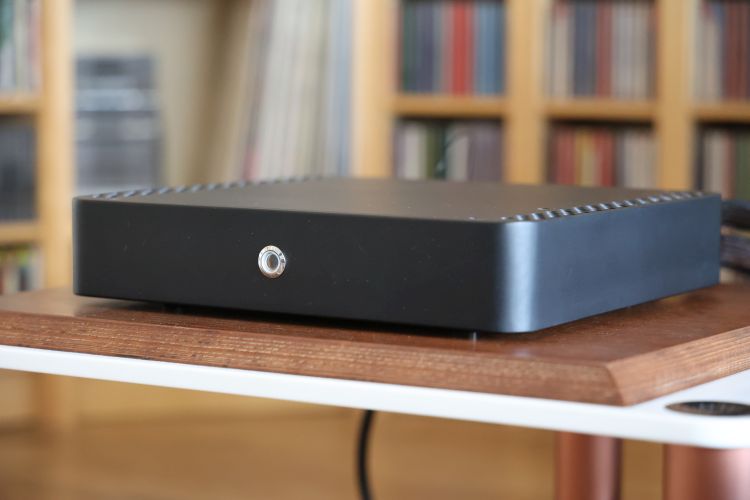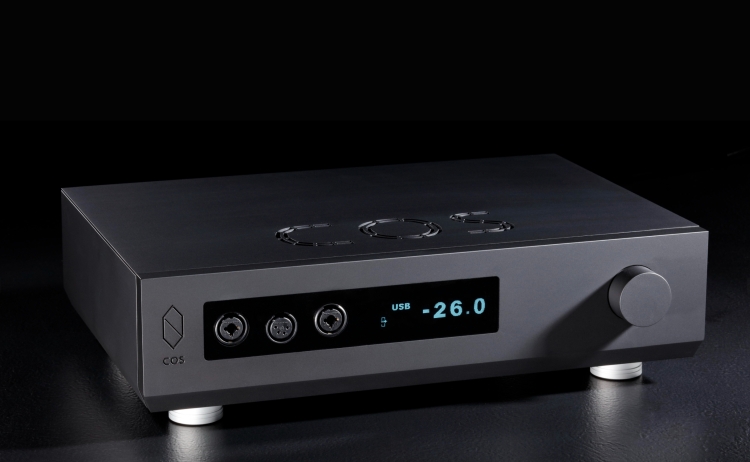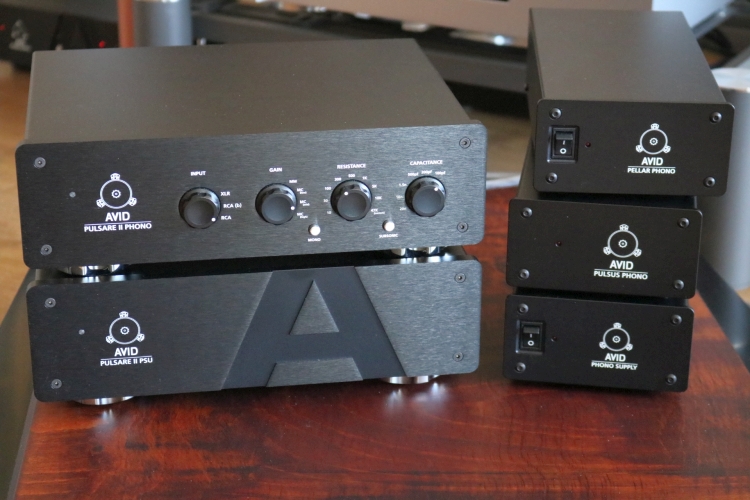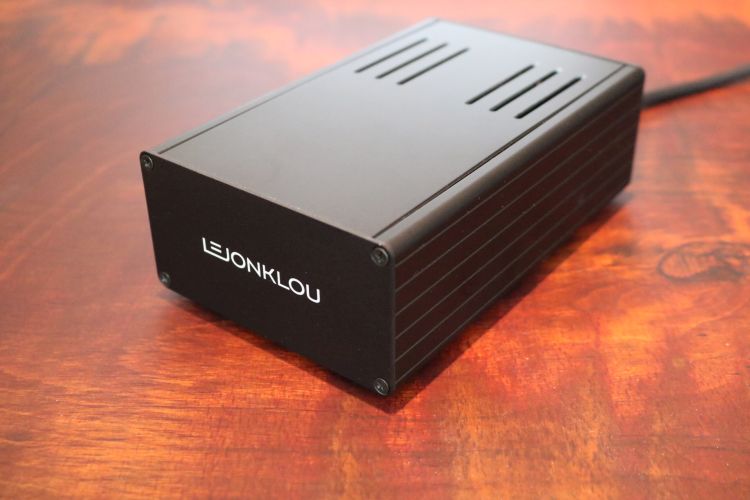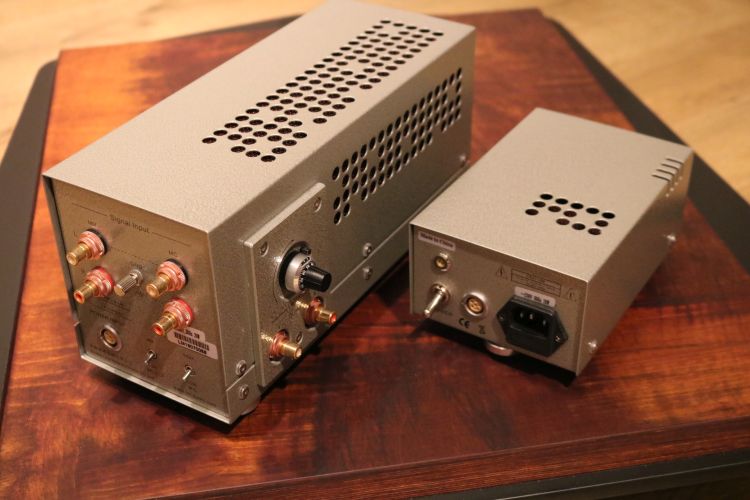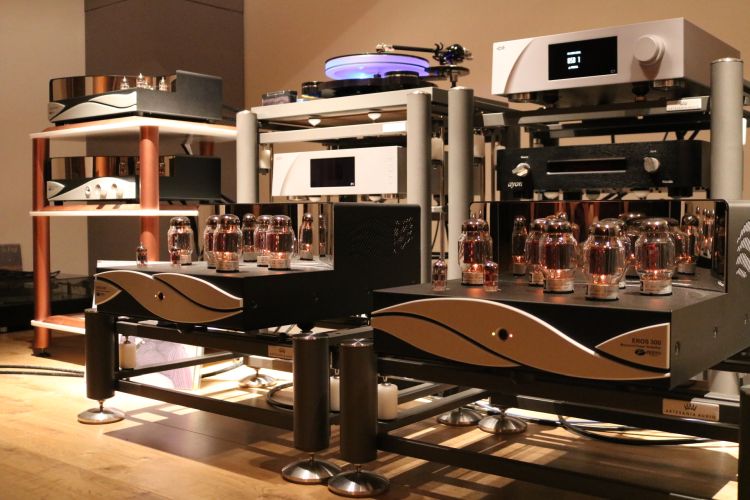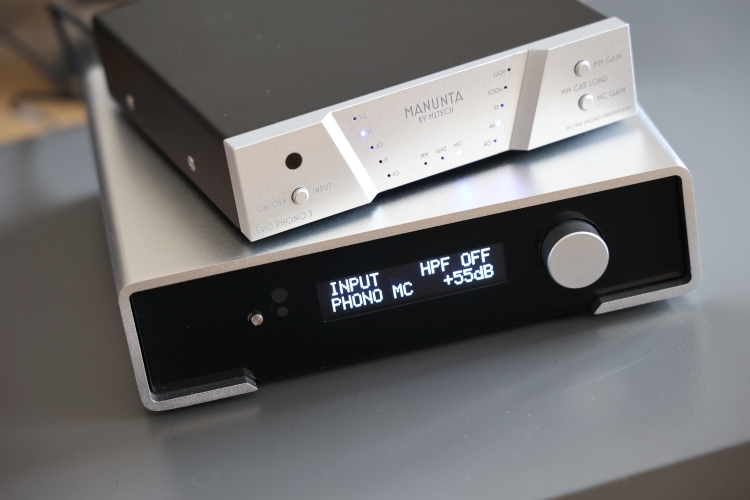
Review sample supplied by manunta-audio
Retail prices:
Manunta EVO Phono 3: €800
M2Tech Nash Rev.b: €1.799
This is a follow-up to the original Manunta EVO Phono 3 and M2Tech Nash review.
Why a second round?
When this review was initially arranged, I had planned on using two turntables with two different arms and different cartridges: the Thorens TD 1601 with the older TP 92 arm and TAS1500 Microlinear MC cartridge, and the Thorens TD 1601 with the new TP 160 arm and TAS1600 Special Line Contact cartridge. Another reason to involve the second turntable is that the TP 92 arm is not cartridge-swap-friendly. In contrast, the new TP 160 tonearm’s SME-style headshell would allow me to quickly try different cartridges, meaning I could also involve an MM cartridge. Alas, the delivery of the new turntable was delayed. I decided to finish the first installment of the review using the available turntable and revisit the matter when the second turntable had arrived.
Now, the new turntable is here, and, as promised, I have performed more tests to complete the review.
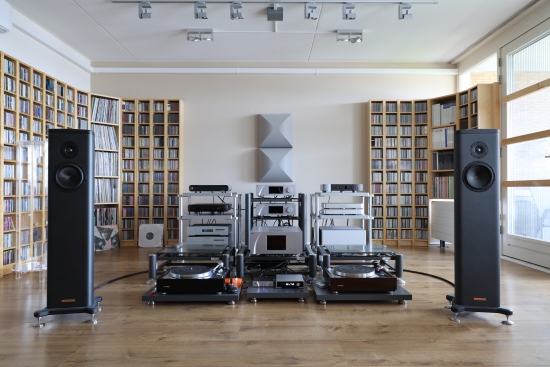
The second turntable may be the same model as the first one used for the previous round, but the arm changes everything. I found during the Thorens review that the two arms have different properties, leading to different ideal arm/cartridge marriages. In short, while the TAS 1500 cartridge works beautifully with the older TP 92 arm, it works less ideally with the newer TP 160 arm. Moreover, the TAS 1600 cartridge did not work well with the TP 92 arm but absolutely brilliantly with the new TP 160 arm. Thus, rather than using the same cartridge for both turntables as I had planned, allowing them both the most synergistic combinations provided better results.
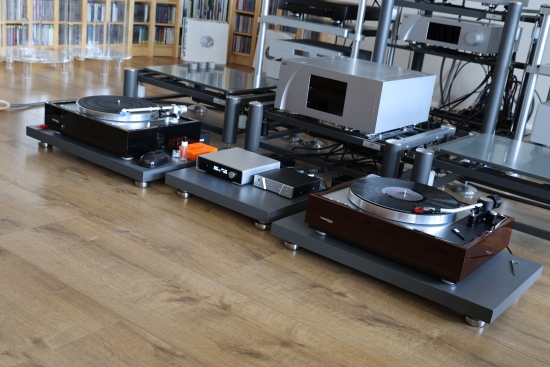
Manunta and M2Tech – Round 2
To my surprise, the new tonearm also shuffles things around for the Manunta and M2Tech phono stages. When using the new turntable with the Manunta EVO Phono 3 and M2Tech Nash, I still hear a family resemblance between the two phono stages. But this time around, the Nash emerges as an even greater victor!
The EVO Phono 3 still sounds engagingly surefooted and remains slightly spritelier, helped by its more forward midrange. But once again, the Nash is so much fuller, robust, and authoritative, and just so much more realistic and mature. This was already the case during the first round, but I did not hear the full extent of its other benefits at that time. For instance, I found the two phono stages equally articulate, resolving, and transparent. But now, with the new tonearm, I hear very clearly that the Nash has the edge in these areas as well!
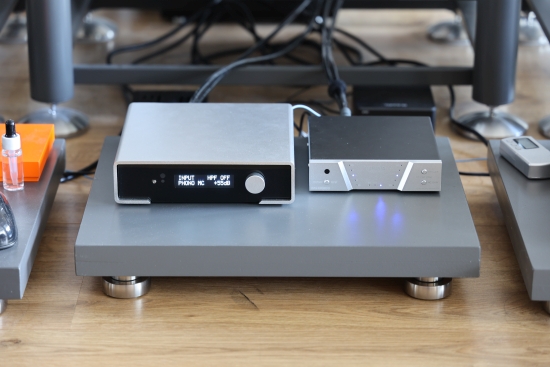
Consequently, the Manunta EVO Phono 3 is now unveiled as less resolving, bland, and rough. To confirm: I had not heard it like this during the first part of this review using the old turntable. I knew the old turntable was not “perfect”, but so far, I felt it was better than many others, and I thought I had a good grip on how the Manunta and M2Tech phono stages compared. But as it often goes in the audio business, the new tonearm’s enhanced resolution, liquidity, and refinement upped the game and provided a new perspective. Now that I have heard the new turntable with the Nash and returning to the EVO Phono 3, it’s like having seen 4K video and returning to “mere” HD.
Power Supply
Perhaps even more strikingly, the Nash now seems entirely happy with the standard switching wall-wart power adapter. This is an even more puzzling observation because the wall-wart proved to be quite a limiting factor during the first round of this review. At that time, the Topping P50 linear power supply proved highly beneficial for both phono stages, but especially for the EVO Phono 3. Of course, the EVO Phono 3 is a simpler design than the Nash, with less regulation, which might explain why the better power supply works so well.
Even with the Topping PSU, the EVO Phono 3 remains slightly lean, while the Nash, even with its stock wall-wart switching power adapter, is considerably more full-bodied. But when using the Topping PSU with the Nash, the cards were suddenly reversed, and it now actually seems to undercut its performance, dulling the sound and making it less interesting. Go figure.
Naturally, the Topping is only a very modest PSU, and one can definitely do better. The next big question is how much more the Van Der Graaf MkII power supply can add.
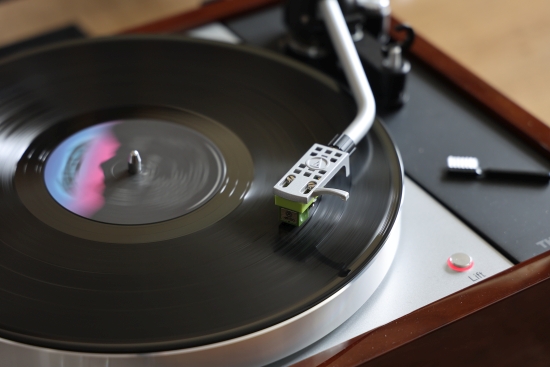
MM
I’ve always been an MC cartridge user. Nevertheless, I’ve obtained very good results with an Audio Technica ATN 150 ml. With its Microlinear stylus, this was an MM cartridge of the better sort while still being attainable. I sold it again a few years ago when I upgraded to a ZYX MC cartridge, but in hindsight, the ATN 150 mlx was comparable to the AT OC9 XSL MC cartridge of the same brand. Although I felt the latter sounded a little fuller and smoother, the ATN 150 ml cartridge made it very clear that resolution and refinement are not solely the territory of MC cartridges.
I should have used an MM cartridge in the same price range as the Thorens TAS 1600 (1200 euros) for a proper comparison, but I was not prepared to spend that kind of money just for this occasion. And having already sold the ATN 150, I did not want to buy it again just for this review. Not too long ago, I used the Nagaoka MP 150 with an AVID turntable and Rega arm, and with the CH Precision P1 phono stage. The cartridge surprised me at that time with a remarkably smooth and refined sound with great bass. At 380 euros, it is a relatively affordable cartridge considering the Nash’s quality and price point. On the other hand, it is far from entry-level for an MM cartridge and surely an appropriate candidate for the Manunta EVO Phono 3.
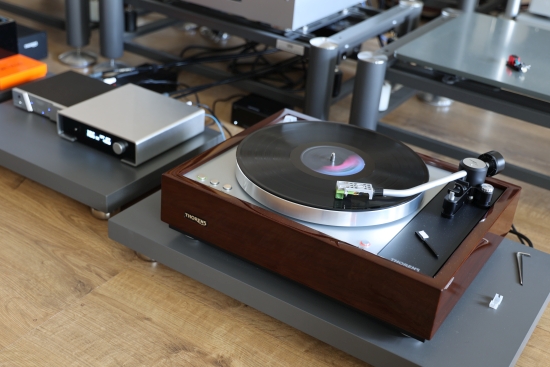
Starting with the M2Tech Nash, it was soon evident that its MM stage has all the same properties as the MC stage. Trying a few gain settings proved worthwhile in finding the optimum balance between relaxation and incisiveness. I liked the immediacy of the 60dB setting but also found it a little brash, so I settled on the lowest 55dB setting. It must be noted that these settings also interact with the preamplifier or integrated amplifier to which the phono preamp is connected.
With the Nash, the Nagaoka again sounded much more refined than one might expect, given its price point. The presentation was smooth, liquid, lush, and beautifully delicate. But the MP 150 is no TAS 1600 and, as was made very clear by now, the Nash can only work with what it’s been handed. The Thorens cartridge was simply a much better partner in terms of texture, solidity, timbre, articulation, and all-out realism. Although the Nagaoka provides very good performance at its price point, I recommend spending more on a cartridge for prospective buyers of the Nash.
After moving to the EVO Phono 3, something similar happened as with the older turntable in the first round. Somehow, the Manunta’s sheer enthusiasm and exuberant liveliness made a little more from the relatively mediocre cards it had been played. Sure, it was not quite as refined and certainly not as full-blooded, but it was arguably more fun than with the higher-end Nash. Whether circumstantially and/or coincidentally or not, it seems that the Manunta works best with more affordable equipment, while the Nash works best with higher-end equipment.
Phono stage pairing aside, my impression is that the Nagaoka cartridge also pairs more synergistically with the AVID TA-3 / Rega RB250 tonearm on the AVID turntable than the Thorens combination, which, in turn, pairs beautifully with Audio Technica and Thorens Cartridges.
Once again, an important lesson to take away is that system synergy is everything!
Final Conclusion
Following the additional tests done for this second round, I must adjust my initial conclusion. Thanks to its upbeat, lively, and expressive presentation, the EVO Phono 3 still makes a party of the cards it is dealt, whereas the more distinguished Nash seems to simply show the source for what it is. And the real bonus is that I was already smitten with the new turntable, but the Nash makes it sound even better!
Both phono stages perform admirably at their respective price points. It is especially noteworthy what the Manunta EVO Phono 3 achieves at what can be regarded as an entry- to mid-level price point. As one might expect, the twice as costly Nash truly delivers with a richer, fuller, more robust, more organic, and more realistic delivery. But just like any high-end gear, it can only work with what it is given, and the Nash deserves premium source components. As a case in point, the Thorens combination I used costs 5200 euros, almost three times the Nash’s cost. Yet, I have a feeling the Nash will happily continue highlighting successive upgrades in the front end.
It will probably come as no surprise that I wholeheartedly recommend both phono stages. Not only that, but I also decided to keep them both as my personal favorites and to serve as references in their respective price categories.

